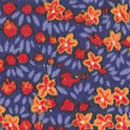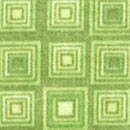An interactive workshop with Friends exploring what spiritual gifts to nurture. An opportunity to bring a new vision of how the Inner life, the Creative Life and the Community Life can be discovered and shared.
Spirituality & Aging Workshop


An interactive workshop with Friends exploring what spiritual gifts to nurture. An opportunity to bring a new vision of how the Inner life, the Creative Life and the Community Life can be discovered and shared.

Q: Do I show through my way of living that love of God includes affirming the equality of all people, treating others with dignity and respect, and seeking to recognize and address that of God in every person?
“Show loving consideration for all creatures, and cherish the beauty and wonder of God’s creation. Attend to pure wisdom and be teachable.”
PYM Faith and Practice, 2002

Q: Is our Meeting open and accessible to all regardless of race, ability, sexual orientation, class, age or challenges?
We are all aging. Many people associate the term “aging” with the later years of life. If you ask a group when aging begins, the answer will often be an age older than that of the people in the group. Friends believe we should honor that of God in one another and willingly serve those in need. We care for our older and frail Friends and we educate and nurture our young.

One of the amazing joys of growing old is to reflect on life experiences. In fact, Sophocles in writing about old age, said, “One must wait until evening to see how splendid the day has been.” As if to say, the rays of sun finally come together in striking brilliance as a sunset. So how can this brilliance be captured for ourselves as elders and to bless the Meeting?
First, create opportunities to celebrate individual lives. Perhaps it is a landmark birthday. An 85 year old in our Friends Meeting is still relishing the joy of her 80th birthday party. She said, “It was like going to my own Memorial Service, but I got to hear and enjoy it all.” Another person slowed the pace of an eventful life work as a peace activist. A cast of characters from 44 years of her work around the world were asked to share memories and fill a scrapbook. The Meeting shared a potluck and sang the songs that accompanied the journey. . This celebration allowed all of us to reminisce about the marches, campaigns, joys, and sorrows of trying to make a difference in the world.
The second way to capture the brilliance of the sunset is through the telling of one’s own story. There are many lists of interview questions and books that can help get the story telling juices flowing, but you simply need to sit down and put your thoughts to paper.
Everyone has a story! It is easy to think our own lives are not as significant as someone else’s life story, but in reality there is goodness in each story. My mother’s story is called ‘Homemaker’. She had an amazing ability to make home in seemingly unorthodox settings, like a chicken house or a truck bed. She painted, put up curtains, raked the gravel and created a home for her family. We all appreciated her willingness to make the most of what she had and her story reminds us of that goodness.
Spiritual Communities can be especially helpful in this process of capturing life stories. Individual or group story gatherers such as Young Friends, are a gift to all. In our Meeting, the present clerk has spent previous years interviewing elders particularly on their role and experiences as Quakers. Subsequently, Times to Remember sessions are scheduled, where she asks the Meeting and all who know these elders to come, hear their stories, and share their memories. This is a delightful ongoing process.
Many find their life story contains a message that needs to be shared in a publication. This could be a journal or newsletter produced by your faith group; Quakers for example may want to publish a Pendle Hill pamphlet or an article in Friends Journal. Don’t be bashful—put these life stories in the church, synagogue, mosque or Meeting library.
Perhaps those who especially need to have your story recorded in some way is your family. An easy way to capture a life story is with the photo album. A picture of swimming at the beach in Silver Bay can be used to tell the experience of going there over a life time, while breaking out some special incidents or meaningful memories. “The Baker Family and Silver Bay” can all be built around that one picture, or many such pictures!
A good life story is one of the most important gifts we can ever offer each other.
Download this article in pamphlet form
LINKS TO MORE INFORMATION: Click on the blue text below to be directed to outside websites that offer additional information on this topic. Articles from this site will open in the same browser window/tab. Articles from other websites will open in a new window; when you are done, simply click out of that window and you will be back on this site.
More articles on this website:
Celebrating Aging in Your Faith Community
Generational Relationships: Advices and Queries
Generativity and Aging
Other Articles/Links:
Whole Life Story: ideas for story gathering

Q: Is my home a place where all members of the family receive affection and understanding, and where visitors are welcome?
PYM Faith and Practice, 2002
Assistive Devices can help people maintain self care skills and participate in their favorite activities. Communities benefit from diversity when adaptations are made to include people with physical or other disabilities. What are assistive devices and how can they help?
Grandpa’s knees hurt and he is having trouble getting out of his favorite chair. Marge has painted watercolors for years, but at 73 holding the brush has gotten painful. Irene’s bridge group has noticed she is having trouble distinguishing between the cards. All of these limitations can be resolved with assistive devices and home remedies.
First, if the limitation might be remedied with a wheelchair, a shower seat, a cane, walker or other equipment, get in touch with the medical provider and ask for a referral to an Occupational Therapist (OT) for an evaluation. Medicare covers the O.T.’s visit and several items she might recommend are also covered by Medicare with a doctor’s prescription. Consulting with a professional may help save money and effort—too many have bought a shower seat only to find it’s not the best model and they have to pay out of pocket.
Sometimes the solution becomes clear from observation. I watched Grandpa struggle to get out of his chair and noticed that his hips were lower than his knees. I suggested he get a recliner with a lift that would slowly rise until he was standing. However, this was a favorite chair, so instead, two cushions were put under his seat and now, with his hips higher than his knees, standing is less of a struggle. Marge’s arthritis meant that holding a paintbrush for long was painful. However, when a sponge was wrapped around the brush handle and secured with two rubber bands, she could paint much longer and pain free.
Irene’s macular degeneration meant that she no longer had any central vision. Her daughter called the Association for the Blind for a free in-home evaluation. They recommended several small changes in her home, such as a bright dot put on the thermostat at Irene’s favorite temperature, and a similar dot on the oven dial at a common temperature for baking. Then they showed Irene a catalogue of assistive devices so she could order large playing cards. They also suggested Irene would enjoy Talking Books and explained that the books she chose would be mailed to her for free, along with the machine to play them on.
Irene’s level of vision loss meant that she qualified for other free adaptations. The phone company would give her a phone with very large numbers, and she could receive free 411 information services since she could not read the tiny print of the phone book. Some services, such as tailored radio stations and Talking Books are available to the vision impaired, not just the blind, plus those who cannot read because of some other cause. The phone company also has special equipment for the hearing impaired that is available on a one time sliding scale payment.
This article has just touched the tip of the assistive equipment and devices available. You can find catalogues on line or through medical equipment stores, and see our list of links and other resources.
Considerations for Faith Communities:
Is your Meeting a safe, loving place?
When we become aware of someone’s need, do we offer assistance?
Are the meetinghouse and the Meeting property accessible to all?
— Queries from Philadelphia Yearly Meeting Faith and Practice, 2002
“In joyful dependence, we can grow to be as fully human as possible, as thoroughly in the image of God as we are intended to be.”
Howard R. Macy, 1988, PYM Faith and Practice
Download this article in pamphlet form
LINKS TO MORE INFORMATION: Click on the blue text below to be directed to outside websites that offer additional information on this topic. Articles from this site will open in the same browser window/tab. Articles from other websites will open in a new window; when you are done, simply click out of that window and you will be back on this site.
More articles on this website:
Including Everyone: Faith Community Care for People with Challenges
Living at Home Forever
Other Articles/Links:
Certified Aging in Place Specialist
Adapting the Home After a Stroke
Interfaith Disability Network
Interfaith Disability Advocacy blog
Sources/Further Reading:
National Organization on Disability, That All May Worship, 2005, Washington, DC.
Erik W. Carter, Including People with Disabilities in Faith Communities, 2007 Paul H. Brookes Publishing, Baltimore, Maryland.